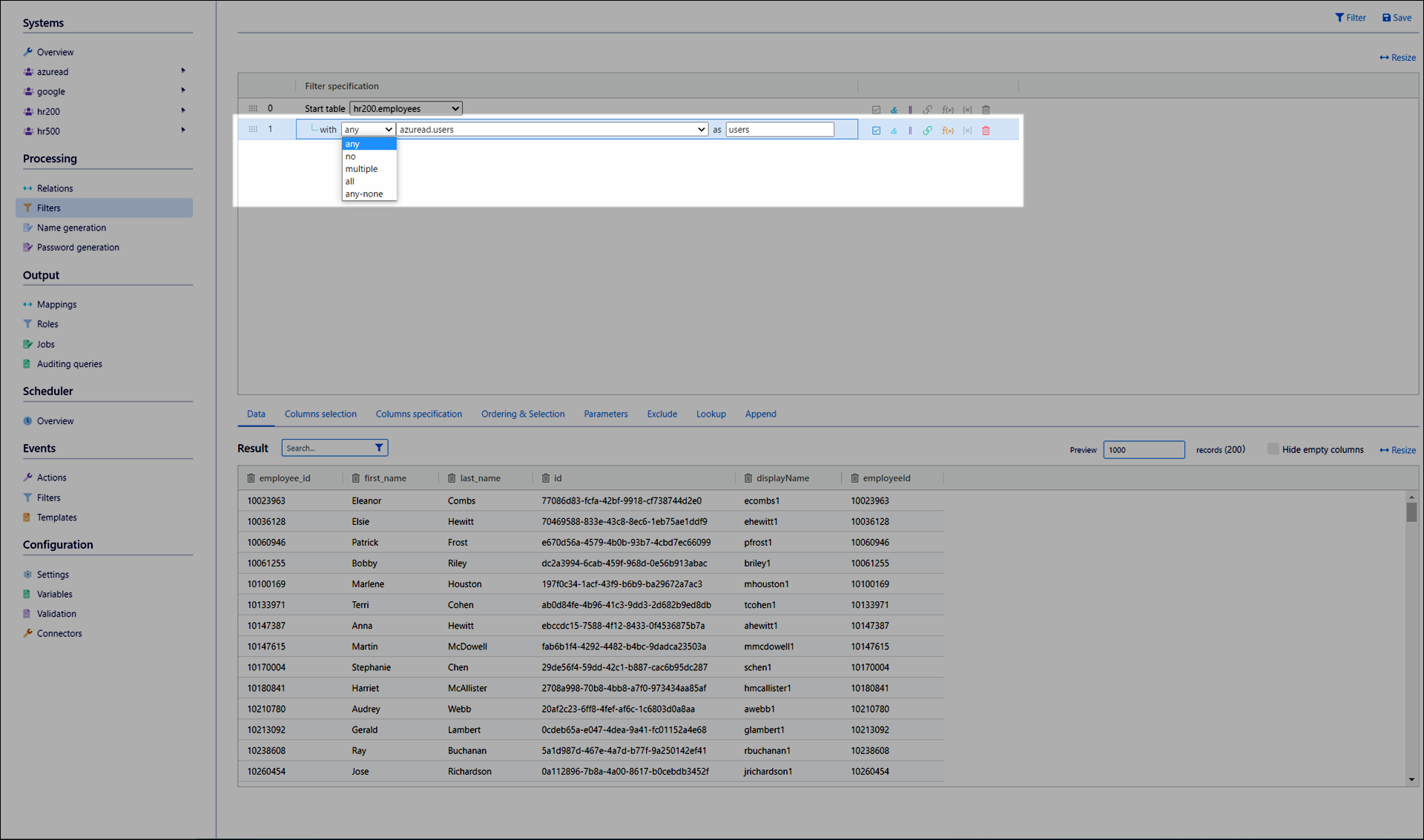Relation items
In Filters, a  Relation filter item combines two input Data tables, to produce a single output table. It is akin to a SQL Join.
Relation filter item combines two input Data tables, to produce a single output table. It is akin to a SQL Join.

This is the most important type of filter item, but also the most complex. The important points are:
In each relation item, the input tables available to join to the initial input table depend on your configured Intra-system relations (including Keys) and Inter-system relations.
The output table, by default, includes all columns from the first input table plus all columns from the second input table. You can Exclude columns as needed.
However, the same is not true of rows. The included rows are determined by the relation item's logical operator. Thus, an output table may have more or fewer rows than either of the input tables. It depends on the order of the joined tables, the directionality of the 1-N intra-system relations between the tables, and the chosen logical operator.
The following logical operators are available:
- Any
Include all rows in the first table which match at least one row in the second table.
Equivalent to a SQL
INNER JOIN.- No
Include all rows in the first table which do not match any rows in the second table.
Equivalent to a SQL
LEFT JOINwithWHERE IS NULL.- Multiple
Include all rows in the first table which match at least two rows in the second table.
- All
- Any-None
Include all rows returned by the Any condition, plus all rows returned by the No condition.
Equivalent to a SQL
LEFT JOIN.